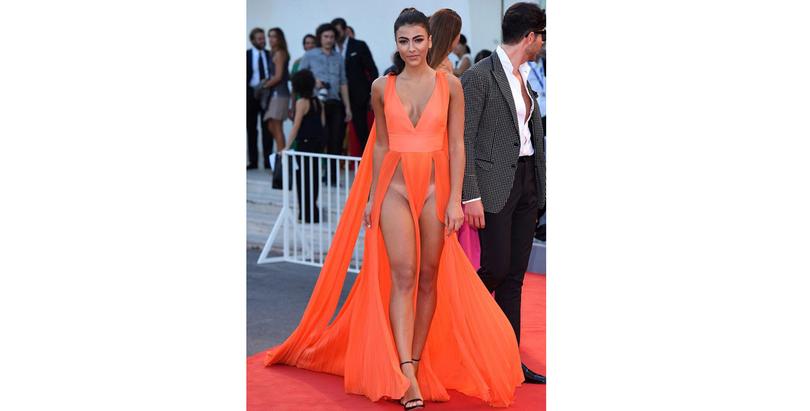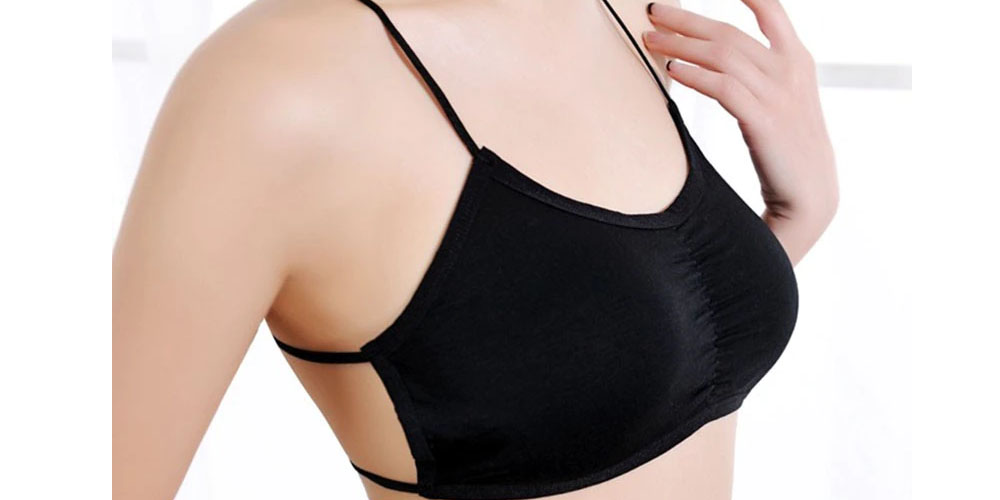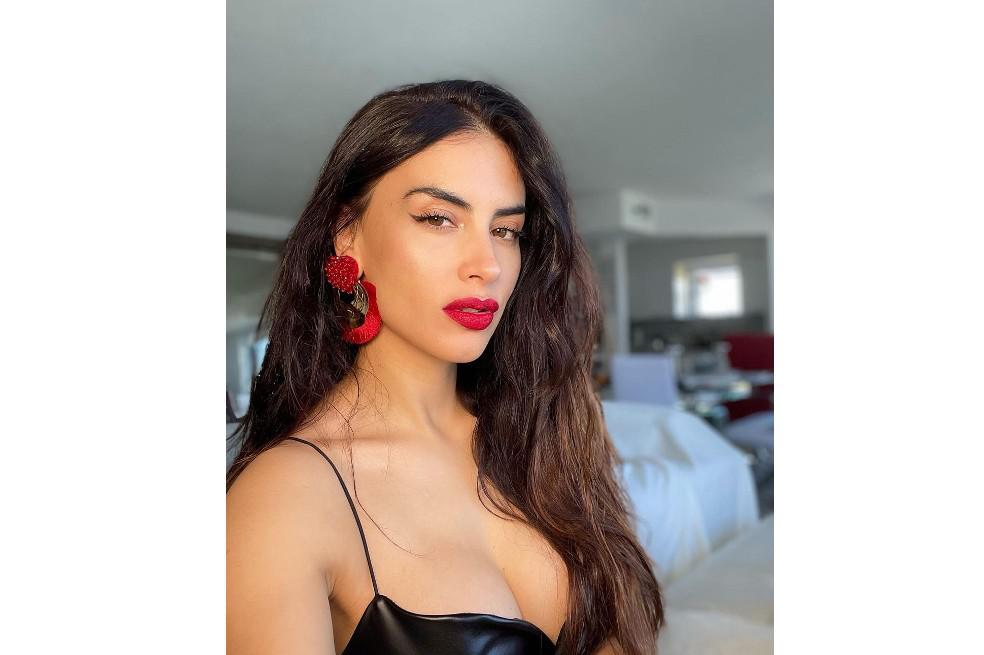[TEST] These are the new Santini cycling 'suits'
The TRIATHLON team continues to work with great effort and enthusiasm to keep you informed. If you want to support our journalism and enjoy the benefits of becoming a premium, subscribe to our website here (the first month is free*).
Triathletes have been using 'trisuits' for pedaling for many years and not only in competition. Terms such as "body", "jumpsuit", "skinsuit" or simply "suit" are used to refer to one-piece technical garments. Made with highly elastic technical fabrics, they manage to adapt to the cyclist's morphology as if they were a second skin. This effect achieves a considerable aerodynamic improvement by dispensing with folds, joints and avoiding wrinkles in the fabric, but it also has some inconvenience. Manufacturers of technical cycling clothing have applied various technologies to reduce them and allow their general use also in amateur cycling.
In this test we are going to tell you the "pros and cons" of the new Santini suits, to improve performance on the bike.
First of all I would like to comment that these suits are designed to improve aerodynamics and that their use makes sense in a cycling oriented to improve performance. In the one that pedals in a position that offers the least resistance to progress, at a high speed according to the possibilities of each one, but with a goal of self-improvement that those of us who do triathlon know perfectly well. These suits are ideal for riding solo, soloing against the clock or leading a pack; to pedal against oneself, not to go to the other's wheel.
In the design of these models, every detail has been thought of, such as the fact that the rear pockets are accessible and spacious, to allow them to be used on a daily basis. Regardless of the duration of the route, you can carry your spare parts, mobile and food in your pockets, this makes it possible to generalize its use. They incorporate wide zippers that facilitate both ventilation and placement, silicone finishes to fix the fabric to the body and they are made with highly elastic and breathable materials. They also offer highly cushioned chamois, of the same quality as those used by the professional Trek Segafredo team.
In this case, we tested two similar suits, they share the quality of their pads, but with different fabrics, designs, technologies and prices.
VIPER DYNAMO “sprinter roadsuit” Vs REDUX ISTINTO “roadsuit”
Before analyzing both models, I would like to recall some data about aerodynamics as the main argument when evaluating the acquisition of these suits, instead of a traditional set of separate jersey and shorts. Both models try to take advantage of the benefits of manufacturing in one piece for aerodynamic gain, although this means a more expensive installation and some small difficulty in case of "an emergency".
a bit of aerodynamics
Aerodynamics in performance on the bike is decisive. As you are going to read below, the impact of the clothing we wear while pedaling is an aspect that is worth considering if we want to gain aerodynamic efficiency.
The cyclist represents approximately 80% of the resistance to the wind and 20% is offered by his bicycle. If aerodynamics are taken into account in the design of bicycles in their tubes, wiring or the profile of the wheels, you should give much more importance to both your position on it and your clothing. As well as improving position to try and reduce frontal drag area and airflow and turbulence, the clothes you wear can make a difference.
Numerous investigations* have compared the differences between riding in loose-fitting clothing and in stretchy, tight-fitting technical clothing. At a very high speed, approximately 50 km/hour, wearing very tight clothing allows you to reduce 83 seconds in 40 km, a very significant difference that increases in relation to the kilometers traveled. The differences between wearing a suit that covers the entire body like a second skin, compared to looser clothes that flutter in the wind or simply offer wrinkles, are greater than those that we can achieve with some aerodynamic bicycle accessories, such as the case of profile wheels.
There are studies that compare the cyclist's clothing options, in which the difference in speed when pedaling with a jersey that is not tight or whose fabric is not as elastic, with a tight suit taking into account the same watts. The results are equally surprising, pedaling at 200 W the cyclist wearing a suit has an advantage of + 0.8 km / hour, and + 1.8 km / hour if he pedals at more than 400 W. These data are mainly explained because with the suits One piece wrinkles are eliminated, they fit perfectly to the cyclist's morphology avoiding the fabric fluttering. Both due to their design and the technology of the fabrics used, they achieve a perfect adaptation to the cyclist's physiognomy and their different structures according to body areas and seams are strategically aligned with the air flows, after analyzing their behavior in the tunnel of the wind.
VIPER DYNAMO
What does Santini tell us?
-Made for high speeds.
-Sleeves in highly aerodynamic fabric for better performance.
-C3 multi-density chamois, with a protective shell to guarantee a very high absorption of shocks.
-Versatility of use, both for demanding solo training or tests against the clock.
What is our opinion?
It is a high performance suit model at a more accessible price. Starting with the chamois that feels very comfortable and cushioned on which you can pedal for hours without missing any other shorts. The pockets are just as spacious, accessible and easy to handle as those of a high-end cycling jersey. The front zipper is very wide, it extends to the navel, which facilitates both placement and ventilation, although in this sense it prevents the total ventilation that is achieved with the complete opening of a jersey.
What did we like the most?
-The heat-sealed ends with wide internal silicone trims were very pleasant and manage to fit the fabric to the skin perfectly.
-The C3 chamois is very comfortable, its design and use of different densities of foam and gel depending on the area, allows pressure to be relieved on the sit bones, but also on the perineal area when you ride in a maintained aero position. The release area under the genitals, with a very soft and absorbent fabric as a shell, is a success.
-The fabric used in the sleeves in the form of grooves or longitudinal grooves in the direction of the air flow, is perceived as reducing resistance. It also favors perspiration thanks to the transparency and fine grammage used in the space between the ribs.
Light and UV resistant fabrics (UPF 50+).
What did we not like so much?
-In the shoulder area there are some small wrinkles when adopting a very aerodynamic position, and this should not happen.
-In conditions of maximum humidity and very high temperatures, the fabric of the chest and back is less breathable, and its zipper system does not allow the ventilation that its older brother, the Istint, achieves.
-The seams of the rings used at the ends of the sleeves and thighs alter the relief of the fabric, affecting aerodynamics. This technical aspect in the upper model is solved by lacking seams and finishing the fabric directly, it would be a success to replicate it in this model as well.
![[TEST] These are the new Santini cycling 'suits'](http://website-google-hk.oss-cn-hongkong.aliyuncs.com/drawing/212/2022-3-2/21756.jpeg)
Have Spork, Will Travel: How to Grate Fresh Coconut http://bit.ly/crNV9
— Andy Dinsmore Mon Oct 19 09:29:38 +0000 2009
Yield: 9
Perspiration: 9
Aerodynamics: 9
Fit and ergonomics 9
Comfort: 9
RRP €189
REDUX REDUX DIFFERENT
Suit with super elastic and aerodynamic fabrics, a suit with exquisite technical details that make a difference.
What does Santini tell us?
-Professional aerodynamic body.
-Developed in collaboration with the Australian National Cycling Team.
-Made with a combination of different fabrics tested in the wind tunnel, whose location and features manage to reduce aerodynamic resistance to a greater extent.
What is our opinion?
This is a much more elastic suit than his little brother Viper, in fact the elastane that provides this feature is used much more in the 5 different fabrics used in this garment. The percentage of elastane present in this suit varies between 20% and 57% in the fabric used to cover the chest and upper back. This greater prominence compared to polyester and polyamide gives it a superior fit, and spectacular adaptation and comfort.
The fabric used to cover the sleeves and back has a diamond structure that manages to reduce air resistance and minimize turbulence caused by the impact of air against the body surface. The same quality chamois as the Viper Dinamo suit, the C3 with Same Pad multi-layer foam and gel inserts, is worn by Trek pros Segafredo and Tadej Pogacar at the Tokyo Olympics. The non-slip silicone bands at the ends of the legs go completely unnoticed, managing to fuse the leg to the skin, making it impossible to pinch the fabric in these areas.
In this suit, a front zipper that opens completely is successfully used, the upper part remains attached like a jacket to the extension of the shorts through a multi-perforated mesh, greatly facilitating ventilation.
The 3 back pockets are a work of textile engineering, with an invisible opening that leaves a laser-cut top flap and exquisite heat-sealed finishes. Its ergonomic design facilitates the handling and removal of objects while driving, and when empty they do not affect aerodynamics.
What is it that we did not like so much?
-A little more ventilation is missing in the area of the armpits and lower back when riding in the aero position. Simple solutions such as making microperforations in the fabric in the area not exposed to the wind facilitates the evaporation of sweat, and with this, ventilation would be improved.
-In the same way that it includes internal heat-sealed seams in key areas such as the upper part of the back, the union of the sleeves and the sides of the chest should also go with these finishes in a suit of these features.
What did we like the most?
-This suit is super stretchy and comfortable. The zipper that allows the front part of the chest to be completely opened is a success to facilitate ventilation. It is a magnificent resource and widely used on climbs in which aerodynamics take a back seat. This technology also allows greater versatility, being able to use this suit on very, very hot days.
-The finishes of the sleeves and legs are exquisite and achieve such a good fit that it is impossible to pinch the fabric.
-Again, the C3 chamois is an ally of high performance and is ideal for long hours in the saddle. This chamois is constructed through an innovative process called carving, which manages to adhere to the body allowing greater freedom of movement. In the areas of the sit bones it contains a gel inside that absorbs vibrations and minimizes the pressures maintained.
-Made of a combination of very light, elastic and UV-resistant fabrics (UPF 50+).
-Key interior seams, such as those on the upper back, are heat-sealed and flat.
-The retractable pockets in the fabric itself, with a laser-cut finish, leave an upper part as a cover for the objects you store in them, achieving a pristine aesthetic.
-The highest percentage of elastane in the 5 different fabrics used in its preparation according to zones, amounts to 57%, which gives it spectacular elasticity and comfort.
-The ends of the sleeves dispense with the sewn ring that the Viper has, favoring a completely flat finish which minimizes resistance.
-The contrast of the white color with the bluish hue inside the pockets, on the zipper and logos, and on the back of the sleeve where the collection to which FORTUNA REDUX belongs can be seen, give it a touch of quality and finishes typical of a high-end collection. The fabric of the shorts in anthracite gray, and the silicone logo on the right sleeve and the Italian flag sewn on the back of the neck, complement the exquisite finishes.
Yield: 10
Perspiration: 9
Aerodynamics: 10
Fit and ergonomics: 10
Comfort: 10
RRP €269
To ride, do I buy a suit or a two-piece set?
Some arguments used against suits are raised as drawbacks, but in most cases they are not. For example, while it's true that putting on and taking off a suit requires a little more care, once you get the hang of it, it's not a problem. In this regard, the ventilation system and removable zipper, which facilitates the opening as a jacket used in the Istinto model, facilitates donning and also makes it less difficult in case of an emergency.
They say that the separate jersey and shorts allow better temperature regulation, this is true if the shorts do not have straps, but in the vast majority of shorts with straps, the Istinto ventilation system is just as effective as wearing a jersey. Another argument against it is that in the event of a fall it is very likely that you will have to throw away the suit, when using two pieces you only have to renew the shorts; In this sense, if you are one of those who fall frequently, you should consider that your choice will be less profitable over time. And it is also said that when you get off the bike or go into a bar, it seems that you are wearing the "superman" suit, that compared to a very tight jersey there are not so many differences either, and you get used to this.
But using a suit the aerodynamic advantage is clear, and it can be used by triathletes, time trialists as well as by cyclists who lead the packs; investing between 40 seconds and 1 minute less in 40 kilometers is a very important advantage.
Taking into account all the alleged drawbacks, and knowing that with tight clothing and wearing one-piece suits I can obtain greater differences than those achieved, for example, with high-profile wheels, without hesitation when you go to push yourself to the maximum I recommend that you wear a one-piece suit. You can value spending several thousand euros on some wheels or pedaling with the new Santini suits
In short: Why should I buy a Santini suit?
Santini is synonymous with quality, avant-garde design and textile innovation in both cycling and triathlon. In fact these suits have been tested in the wind tunnel and designed in collaboration with the Australian national cycling team. This season they are being used in the highest competition by professional cycling teams, both in the fight against the clock and in road cycling. In fact, the Olympic champion against the clock, Primož Roglič, used a Santini suit in the Tokyo test.
These suits that we have tested, in addition to being beautiful and have high-performance fabrics, feel like a glove, and on the bike in the aero position you feel "like a pro". Both models are very well made and their fabrics offer good performance and they share a key piece when it comes to pedaling, the Santini C3 chamois with the highest performance. The Viper Dinamo is a very good model as a first suit, with good aerodynamic performance at a more competitive price.
But after the test, we are left without a doubt with the Redux Istinto. For the extraordinary elasticity of the fabrics used, for its ergonomic design of ventilation and facilitated front zipper, and for the details of its terminations and heat-sealed finishes that are exquisite.
If you are one of those who care about performance on the bike, of those who show your face in the peloton and "of those who even itch with your shadow", with these aerodynamic suits you can save between 3 and 5 watts, compared to wearing a tight jersey and a short shorts. This means that these suits are recommended in cycling in which performance prevails, and it is more than likely that their use will also be generalized among fans.
These aerodynamic suits from Santini are here to stay due to their clear aerodynamic advantages, both for triathletes and for all those cyclists who do not like to go on a wheel.
Reference:
Riding against the wind: a review of competition cycling aerodynamics. Timothy N. Crouch et al. Sports Engineering volume 20. 2017
santinicycling.com




